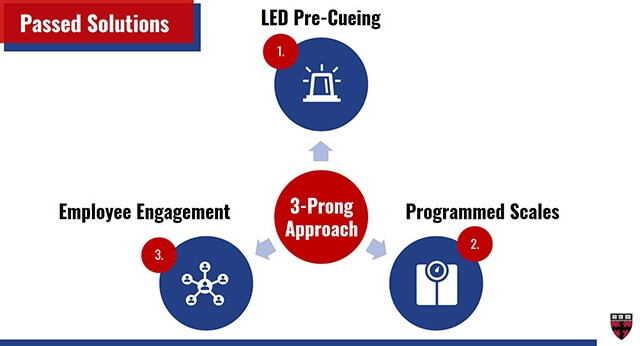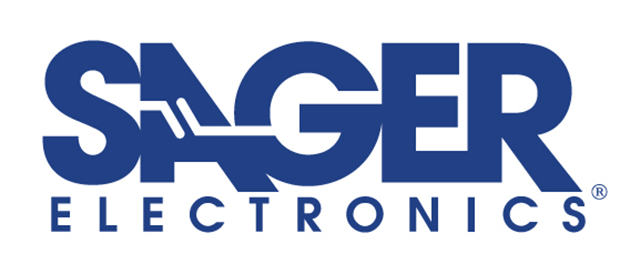News
Students in ES 96 developed a three-pronged solution to help Sager Electronics improve order accuracy.
For Sager Electronics, maximizing order accuracy at the firm’s Middleborough, Mass., distribution center is critical to delivering the highest levels of customer service. Order accuracy not only affects the brand’s reputation, it also contributes to the financial and safety performance of the distribution operation. The 133-year-old distributor of electronic components to original and contract equipment manufacturers targets an accuracy rating of 99.65 percent or higher.
Following an internal process designed to identify key areas for improvement, the firm enlisted the help of Harvard John A. Paulson School of Engineering and Applied Sciences (SEAS) students to identify root causes and develop cost-effective and easy-to-implement solutions for improvement. The students partnered with Sager Electronics for their group project in Engineering Problem Solving and Design Project (ES 96), a SEAS course that challenges students to use engineering design skills to create a solution for a real-world client. The juniors in the course, who represent all five engineering concentrations, collaborate to design and drive the entire project.
Their goal was to develop systems to reduce the average number of errors per month at the firm’s Massachusetts distribution center, which ships approximately 20,000 items each month. The company’s quality program allows one error for every 1,111 order lines shipped. The students’ goal was to reduce the number of monthly errors from 40 to no more than 20. After studying company operations, they decided to focus on the two most common types of errors: short shipments and wrong part shipments.
“One of the main problems that we found was human based. Employees, when putting items away or picking them, would find and scan the correct location. Errors most frequently occurred when the employee turned around to put away or pick the item, sometimes leaving behind the item during the pick process or grabbing it from a location other than the one that was scanned,” said Jude Najjar, S.B. ’21, a mechanical engineering concentrator. “Our system provides visual indication that shows the employee the correct location, so even if they look away or get distracted, they will be able to see where the correct location is and avoid placing items in or grabbing them from the wrong location.”
The students designed an LED pre-cueing system that uses lights to help workers find the right parts. Microcontrollers and multi-color LEDs would be wired along the shelves at the Sager Electronics warehouse, with each employee assigned a different color. When that employee scans an order, the system converts the RF scanner ID to an LED color, and the shelf where that part is located lights up in the employee’s assigned color. That light turns off when the next item is scanned, Najjar explained.
In an effort to reduce quantity errors—where the wrong number of parts are shipped to a customer—the students explored the use of programmable scales. They suggested that Sager implement a commercial scale with product counting functionality and the ability to store weights.
Sager Electronics is a 133-year-old distributor of electronic components to original and contract equipment manufacturers.
The students created software the firm could use to test a counting scale. The software is capable of connecting to a scale and reading the weight, as well as product weight information and number of parts from a database of orders. The user can select which order they are filling, and then the software uses the product weight from the order information and the weight readout from the scale to tell the user how many items they have weighed and whether they have reached the target number, explained software lead Davey Schoenberg, S.B. ’21, a mechanical engineering concentrator.
To help further reduce errors while ensuring employee ownership of the recommended changes, the students proposed an employee engagement program. They created a questionnaire to gauge employee performance, gather suggestions, and reduce turnover, which is tied to an analytics platform that provides real-time feedback for managers. In addition, they proposed that the company hold periodic group meetings and worker appreciation events with employees and managers, and provide frequent re-trainings that focus on procedure modifications.
Project co-lead Douglas Henze was proud of the work he and his peers completed over the course of the semester. The mid-March shutdown of the University’s campus posed the biggest challenge to the semester-long project, requiring a creative re-thinking of their solutions, he said.
“The transition to remote instruction took away the ability to integrate a physical product at Sager. Decreased access to the facility also made debugging hard initially. The solution began to transition from creating this physical product to making a detailed software component with implementation documentation and connecting to Sager via a VPN,” said Henze, S.B. ’21, an engineering sciences concentrator. “We also began to look at our class as more of a consulting group, designing solution ideas and suggesting directions Sager could go with, rather than simply placing our technology directly on their shelves.”
Even in the face of such unprecedented and unexpected challenges, the work the students’ did this term was very impressive, said instructor Jeffrey Paten, Lecturer on Engineering Sciences.
“I was proud to see the students of ES 96 embrace the engineering approach and commit to thoroughly understanding Sager’s processes and how to best achieve their continuous improvement goals. I was happy to see the students exhibit excellent communication of ideas and demonstrate healthy consensus building while developing their comprehensive solution plans,” he said. “I hope they remember how unfamiliar the problem felt at the onset and how they have all the tools needed to take on any challenge in the future.”
“Following our internal efforts identifying areas for improvement, we engaged with Harvard SEAS to assist in developing cost-effective and easy-to-implement solutions designed to help us consistently achieve 99.9 percent in order accuracy,” remarked Shannon Freise, Vice President of Operations for Sager Electronics. "Over the course of the study, the students learned the intricacies of our business and the varied processes that go into operating a large distribution operation. We were impressed with their thorough and professional approach, and the recommendations they presented."
Topics: Academics
Cutting-edge science delivered direct to your inbox.
Join the Harvard SEAS mailing list.
Press Contact
Adam Zewe | 617-496-5878 | azewe@seas.harvard.edu




